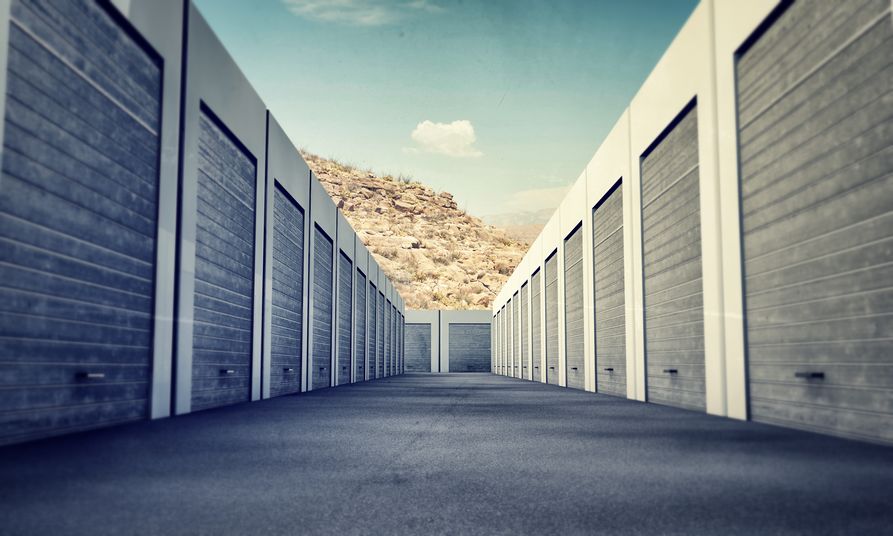The self storage sector maintained its strength throughout the first quarter of 2021, with continued positive street-rate performance and steady development activity across the country. Despite the rising cost of construction materials, self storage developers continued to add new self storage construction projects to the pipeline.
READ ALSO: Phoenix ranks No. 5 in U.S. for self-storage investment
As of March, more than 125.7 million square feet of self storage space was under construction or in the planning stages across the U.S., accounting for 8.4 percent of the nation’s total inventory, up 20 basis points month-over-month, according to Yardi Matrix data.
The table below highlights the top 10 markets for self storage construction, ranked by total square footage under construction or in the planning stages as of March 2021.

10. SAN DIEGO
San Diego’s economy has been shaken by the pandemic, but the metro managed to regain many of the jobs lost at the beginning of the crisis. San Diego’s unemployment rate fell to 7.2 percent in February 2021, slightly above the 6.6 percent national figure, according to preliminary data from the U.S. Bureau of Labor Statistics. Employment gains were recorded in the mining, logging, and construction sectors, which added 3,200 jobs over the 12 months ending in February.
Despite the overall economic uncertainty in San Diego, self storage development activity remained stable throughout 2020. Last year, the metro reached a new cycle peak in deliveries, with a total of 774,216 square feet of storage space completed.
This year seems to be equally busy for self storage developers in San Diego—the metro had some 2.3 million square feet of storage space under construction or in the planning stages as of March, of which more than 450,000 square feet were added to the pipeline during the first quarter alone. With an existing stock of some 18 million square feet, the market has merely 5.8 net square feet of storage space available per capita, below the 6.7 national average.
9. SACRAMENTO
Higher percentages of government, education, health-care and other essential jobs helped Sacramento better withstand the effects of COVID-19. Additionally, thanks to accelerated migration from the San Francisco Bay area, the metro’s multifamily market saw substantial growth during the pandemic, underscoring demand for self storage space as well.
Although Sacramento’s storage market is slightly oversupplied, with around 8 net square feet of storage space available per person, street-rate rents were up for both the standard 10×10 climate- and non-climate-controlled units by 2.7 percent and 2.3 percent, respectively, year-over-year in March.
As of March, the metro recorded a robust development pipeline, with 30 projects under construction or in the planning stages, encompassing more than 2.3 million square feet. The underway pipeline accounted for 13.2 percent of Sacramento’s existing inventory, down 10 basis points over the previous month.
8. TAMPA – ST. PETERSBURG – CLEARWATER
Thanks to significant population expansion in recent years, Tampa has been ranked one of the fastest-growing cities in Florida. As the health crisis fueled the popularity of lower-cost metros, Tampa continued to attract businesses and residents during the past year. According to a study by Roofstock, the metro’s population is expected to surpass 3.8 million by 2040.
The heavy population gains also sustained self storage development in Tampa. New construction peaked in 2018 when more than 2.6 million square feet of storage space was delivered. Although self storage development has slightly slowed down in the past few years, the metro still has a significant development pipeline. As of March, projects under construction or in the planning stages totaled more than 2.4 million square feet, accounting for 8.9 percent of the metro’s 26.8 million square feet of stock.
7. FORT WORTH
Following the development boom in 2018, the self storage market in Texas has become notoriously oversupplied. Along with Houston, Austin and San Antonio, Dallas-Fort Worth was compelled to limit its new development pipeline to help balance supply and demand.
While the pandemic-driven economic fallout kept Dallas-Fort Worth cornered over the past year, the pent-up demand for storage space created a favorable environment for the self storage industry. Street rates increased 2.2 percent year-over-year in March for the average 10×10 non-climate-controlled and 1.8 percent for climate-controlled units of similar size.
The elevated demand for self storage has seemingly restored the confidence of developers in the metro. As of March, Fort Worth alone had 27 projects in the pipeline, totaling more than 2.4 million square feet. The share of projects under construction or in the planning stages accounted for 10.3 percent of Fort Worth’s 23.8 million square feet of inventory.
6. SAN FERNANDO VALLEY – VENTURA COUNTY
Despite moderate construction activity in the past decade, the region’s self storage market is becoming increasingly popular with developers. Last year, four projects were delivered, encompassing 482,042 square feet. In 2021, development activity accelerated even more, with eight projects under construction and 18 in the planning stages, totaling nearly 2.5 million square feet of storage space.
The new-supply pipeline accounted for 13.3 percent of the market’s existing inventory. With a completed stock of 18.5 million square feet, the San Fernando Valley-Ventura County region has only 5.2 net square feet of storage space available per capita, below the 6.7 national figure. The low inventory and ongoing relocations from the Los Angeles basin might provide an opportunity for further self storage growth in the area.
5. SOUTHWEST FLORIDA COAST
Southwest Florida is yet another region benefiting from the relocations from major gateway cities. Thanks to a lower cost of living, the area is poised to keep attracting residents and businesses from across the nation. Moreover, Cape Coral and Fort Myers were listed among the country’s top 10 most promising real estate markets in 2021, according to the National Association Realtors, the Business Observer reported.
The region’s growing population and up-and-coming real estate market will continue to fuel self storage development activity. As of March, Southwest Florida had some 2.5 million square feet of storage space under construction or in the planning stages, accounting for 14.5 percent of the region’s 17.5 million square feet of stock.
4. CENTRAL NEW JERSEY
Following a year that saw only three new deliveries in Central New Jersey, construction activity picked up. As of March, seven projects were underway and 30 were in the planning stages, totaling nearly 2.6 million square feet. The Central New Jersey market’s self storage stock amounts to roughly 12.2 million square feet. Its per-person inventory is 4.3 net square feet, below the national average.
Central New Jersey will likely attract more self storage developers in the future, as nearby high barrier-to-entry markets such as New York City have become increasingly competitive and offer limited opportunities for new development.
3. LAS VEGAS
Las Vegas’ self storage market has been capitalizing on the metro’s substantial population growth in recent years. The metro has gained more than 315,000 residents since the 2010 census, according to July 2019 estimates. Despite experiencing the steepest economic decline due to the pandemic, the unemployment rate in Las Vegas has been gradually recovering over the past few months—the jobless rate stood at 9.3 percent in February, according to preliminary BLS data.
Although the metro has been experiencing difficulties since the onset of the health crisis, developers have maintained activity. Self storage development has gradually accelerated since 2016—the metro recorded a cycle peak in 2020 when nine properties were delivered encompassing a total of 892,367 square feet. As of March, Las Vegas had more than 2.6 million square feet of storage space under construction or in the planning stages, accounting for 14.7 percent of the metro’s total stock.
2. ORLANDO
Before COVID-19, Orlando enjoyed strong economic growth underpinned by relocating businesses from the Northeast. Healthy market fundamentals resulted in demand for self storage—over the past decade, Orlando has added more than 6.8 million square feet of storage space to its inventory.
Although the coronavirus outbreak has affected the metro’s key industries, self storage projects did not come to a halt. As of March, Orlando had slightly more than 2.7 million square feet of storage space underway or in the planning phases, accounting for 11.1 percent of existing stock. The metro had 11 projects under development and 28 in the planning stages.
1. PHOENIX
While the effects of the pandemic did not go unnoticed in Phoenix, the metro has been praised for its healthy market fundamentals and its ability to withstand the impacts of the economic hardship. Although the self storage market also experienced declines, Phoenix was able to recover, with annual street rates increasing 3.8 percent and 6.5 percent, respectively, for the average 10×10 non-climate and climate-controlled units, as of March.
In 2020, developers added 22 facilities to Phoenix’s inventory, totaling 2.3 million square feet. Despite the metro’s slightly oversupplied status, with 7.5 net square feet of storage space available per capita, developers seem to be bullish on the market—as of March, Phoenix had some 4.4 million square feet of storage space under construction or in the planning stages, accounting for 13 percent of total inventory.
This story was originally published at Multi-Housing News.




